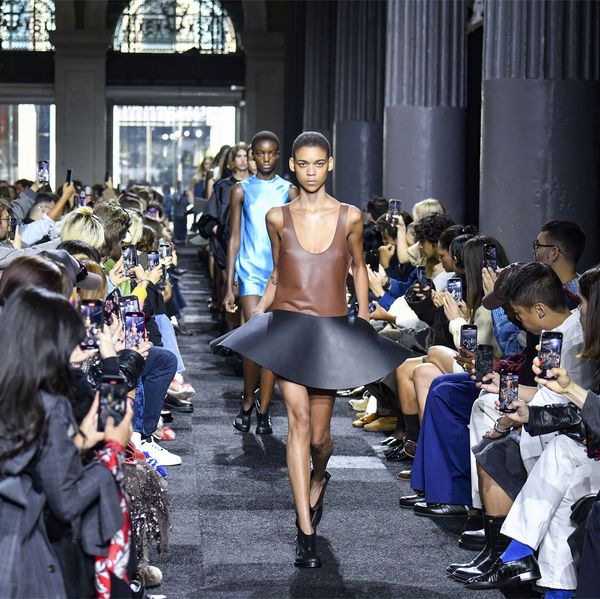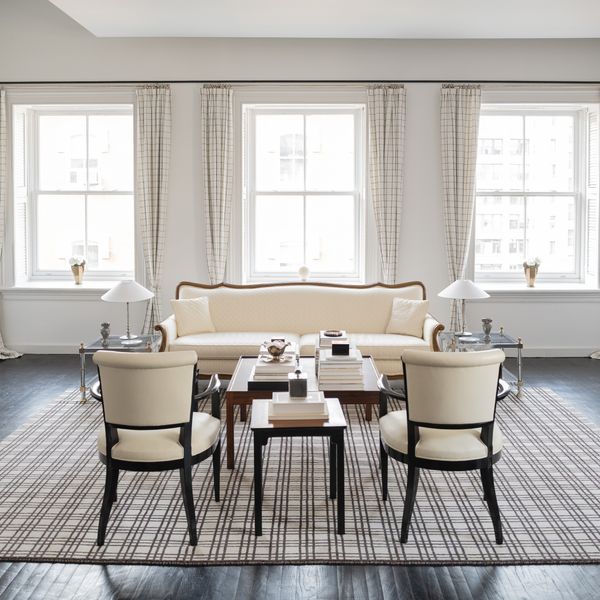Your New Favorite Piece of Clothing Will Be By Nellie Partow
You’ll wear it once a week (minimum) and keep it forever.
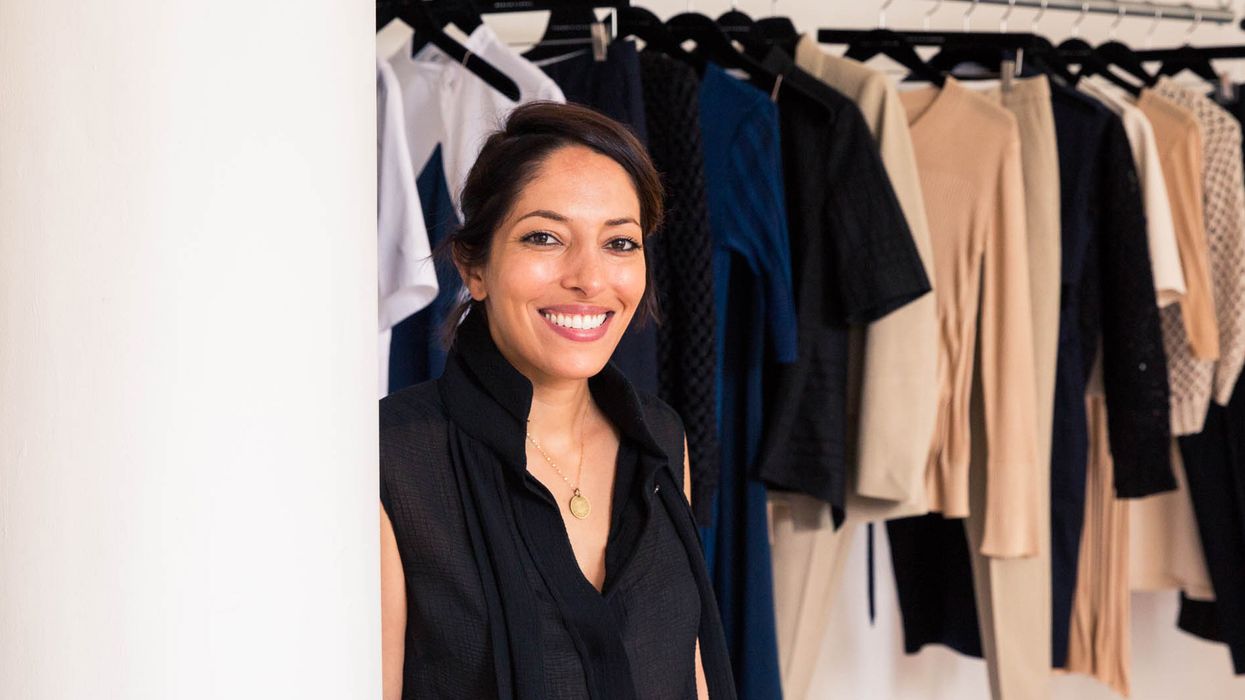
There’s something to finding the perfect piece. That sweater, that jacket, that dress. It’s the thing you’ll turn to not just for a season, but consistently for years. And, frankly, it’s made even more special when such a piece comes from a label that not everyone on the block is lining up for; when it feels like that piece is just for you (we’re selfish, in the end). There was lots of gleeful hand clapping when we visited Nellie Partow at Garment District atelier: there were so many of those forever pieces that it was like we could stop all our blubbering about fashion and trends and just wear her stuff forever. Partow has the kind of refined aesthetic (she worked for years at Calvin Klein and Donna Karan, and it shows), that toes the line between easy and sophisticated—honestly, you could pull off either vibe wearing her richly knit sweaters, streamlined jumpsuits and tailored jackets. And then there’s the luxury aspect: the fabrics are from Italy, everything is handmade in New York, and has the same kind of precision and quality as The Row or Jil Sander. And there’s the contradictions of the designer herself: smiley, approachable, totally chic, and a former amateur boxer who fought at Madison Square Garden and won a few belts (she still trains multiple times a week). It all adds that much more to your next perfect piece—which we’re pretty certain will be by Nellie Partow.
It was always going to be fashion for Partow:
“Fashion was something I always wanted to do. It was really clear from a very young age. I used to watch Gianni Versace and Yves Saint Laurent growing up in the ‘90s—it was something I was always drawn to. I remember the first time I told my dad I wanted to go to design school he said, ‘Go to business school first because if you want your own brand you should know how to run a business.’ I always wanted to have my own company. So I took his advice, I went to business school first, and then after graduating I went to Parsons for design. While I was at Parsons, I was lucky enough to like work under Donna Karan’s team. I learned a lot while I was there and gained a lot of perspective. My first job upon graduating was at Calvin Klein. I designed there for almost 10 years and then I did the collection sweaters for John Varvatos, so I had both women’s and men’s background.”
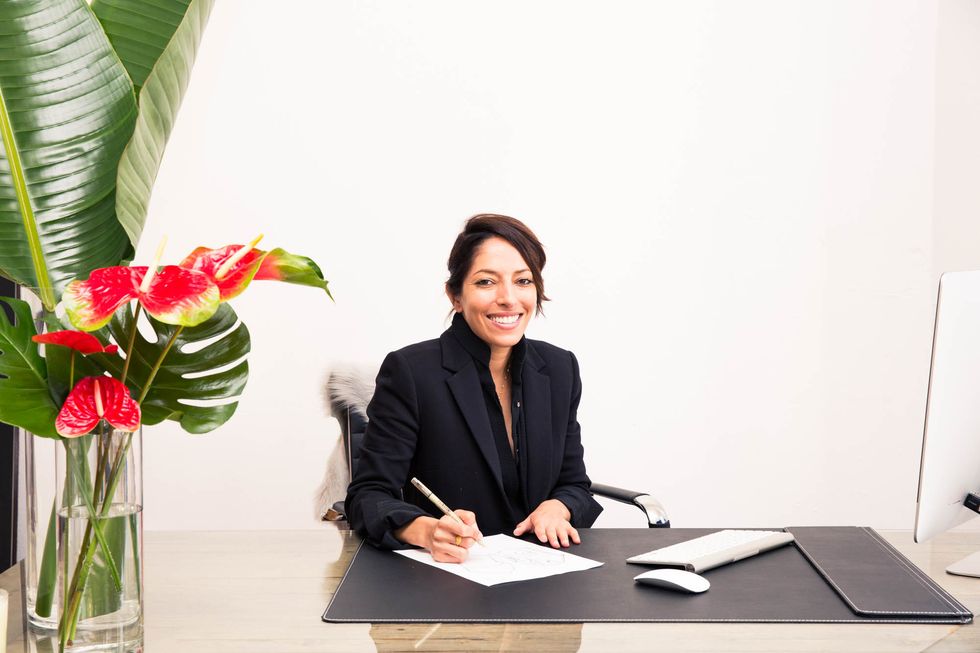
Why working for the big brands was an important education:
“It was critical to be honest with you. Even from Calvin who was so established and quite a large-scale company and then going to John who was still quite young and was in those really strong growing stages, it helped me really understand the DNA of each brand and how important that is from the design perspective. Making sure that when you approach the creative process you’re tapped into who their customer is, what that lifestyle is, and the heartbeat of that business. When you don’t know who you are you get caught up in what’s of the moment or what’s going on from a trend standpoint. You lose yourself in a sense.”
Why she took the jump to starting her own brand:
“It was scary. It was like standing at the ledge and you just have to go for it—it was a now or never situation. The brand is a little over four years old, it launched in 2011, and at that time, I felt really confident with the experience that I had. I was ready to take it on and once the ball starts rolling it’s a snowball effect—you’re in it, you can’t pull back.”

How she landed on her brand identity and aesthetic:
“From an aesthetic understanding of what the brand was going to represent, I wanted to make sure that every piece that was designed is something that I would genuinely wear and that, from a gut standpoint, it felt good. I wanted to make sure that it really came from a place of trusting my instincts and creating something that felt really good; that it was something that I was passionate about and would wear. I started to realize the niche we were filling in the marketplace and what categories people were really recognizing us for—I mean, the knitwear is something that everyone talks about that’s quite unique to the brand. From a business standpoint, because of my 10 years prior to starting my line, I’ve had a lot of great advisors and people that have established some pretty incredible traction in the industry that have been so generous to just share information and give me advice. Even though it’s a younger brand, I’ve had about 15 years designing so there are a lot of relationships that I forged over the years, especially with our Italian mills—it’s a huge, huge benefit to have their support.”

What she was inspired by for her spring 2017 collection:
“I [usually] inspired in the very beginning by a color story, so whether it’s a photo of a sunset or the ocean—nature’s a huge source of inspiration and architecture’s big for me. [For this collection] I was reading a Joseph Campbell quote that really inspired me. The essence of the quote was that human beings aren’t searching for the meaning of life, but more so wanting to feel alive. So, back to color, I kept thinking life can be hard enough and you want to feel incredible. These bold cherry reds and deep aqua blues that we chose, it was all about evoking emotion and that feeling. I always wanted to go back to how I would resonate with that quote and how piece really makes you feel alive and makes you feel amazing. That was the root of the inspiration for this particular collection. I’ll send the color to Italy and we’ll take the piece of paper or dry petal, I’ll send that to our Italian mills and have them dye and match those colorways for us. We get them back and start to lay out the color stories. At the same time, I’m simultaneously picking out the fabrications that we’re developing. Then we’ll start dying the different qualities [fabrics] that have been selected. All of the fabrics and colors are unique to us.”
How knitwear became her *thing*:
“I didn’t set up with the intention to do knitwear differently than other brands—it’s something that needs to come organically. You have to stay true to who you are. All of us are so different in our own right, so if you’re authentic, that’ll come through. The knitwear just happened to be mine. It’s something I love and am really passionate about. I love the dimension that knitwear creates—some of the yarns that we work with are incredible. The best part about knitwear is that it’s limitless in possibility in terms of the stitch that you create or the dimension, where a woven fabric is a little bit flatter. I’m not a print-driven person, so I love the idea of creating texture with knitwear.”

How manufacturing in New York allows the quality to be high:
“Everything is manufactured between New York and Italy—90 percent in New York. There’s a level of quality that you gain when you’re close to the process. There’s still incredible manufacturers in the US. Predominantly, they do luxury—it’s expensive; the workmanship takes a bit more time. We can’t compete with some of the other countries that have lower wages, but the quality is is so critical that I wanted to make sure that we were able to stay very close from conception until it’s delivered to our stores that we work with. I like being able to support New York manufacturing, but there’s some machinery that just isn’t here anymore, so I had to go to Italy for some.”
The most rewarding aspect of her job:
“We did an event with one of the top retailers in the US about a year ago. There were ten women at a time fighting over the samples in the dressing room. It was a moment when I had to pinch myself—it made me realize that I’ve done something right. That’s such an important and rewarding aspect for me—seeing our customers actually wearing our clothes. When they’re purchasing all these pieces from you, it’s an incredible feeling. It’s rewarding as a designer to have created something that someone feels really special in. These women have access to buying any brand—we’re in the price point—so it’s extremely rewarding in that respect. We ended up being the number one selling vendor in the store that day. When you’re sitting next to brands that are a hundred years old, it feels really great.”
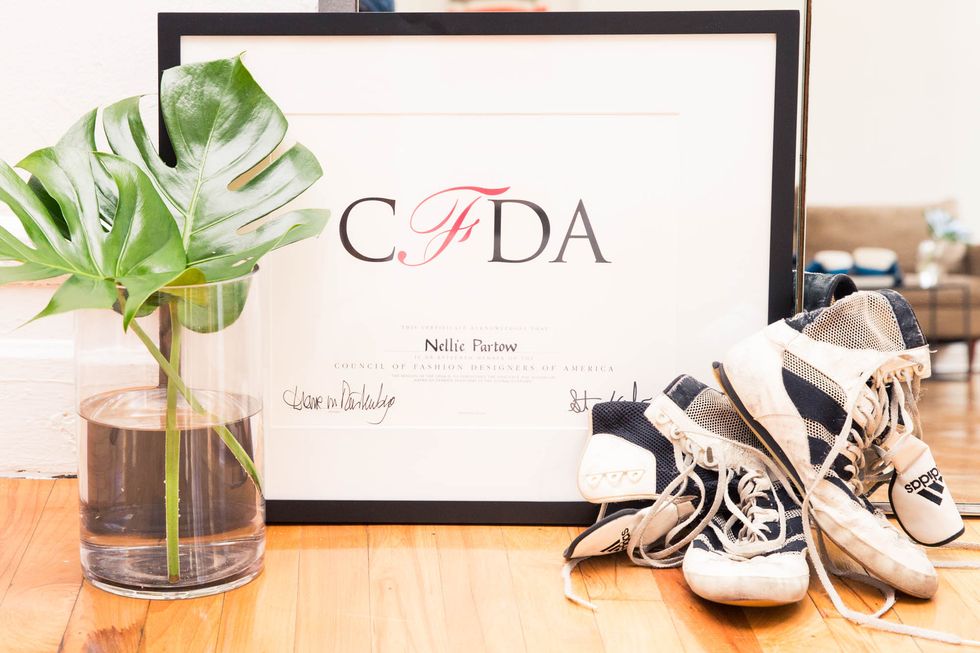
Why she always listens to her customers:
“I really believe in supporting our stores. There’s something that I gain from meeting the women. I learn a lot about who they are and their lifestyle in general. I try to do a lot of personal appearances and be very hands-on with supporting our retailers and making sure that we’re also doing everything we can to get to know who these women are. It helps me understand my brand better—I don’t want to sit here in my own bubble. Donna Karan was the one who taught me that. When I was in business school, I met her and was able to ask her ‘what do you think I should do between now and the time that I go to design school?’ She said to do as much retail as you possibly can, because when you’re on the floor you get to know who your customer is. It’s the best piece of advice I’ve been given. I put myself through business school working retail.”
How she’s growing the label (but not too fast):
“I really want to make sure that we grow at a steady pace. I don’t want us to get ahead of ourselves. I’ve seen companies grow too quickly and then they lose the level of quality that they started with. I always need to make sure that the product is continuously thriving from a construction standpoint—and make sure that’s consistent with our growth. We don’t want to overly distribute ourselves, to be honest. We want to be very selective about our retail partners—there’s so much product in the world right now, from a business standpoint, there are very few brands that I see that I can say that they’ve done an interesting job. I want to make sure I keep the integrity of the design and the company culture—that dynamic needs to stay in place as well. The most important thing is to enjoy what you’re doing and have fun with it.”
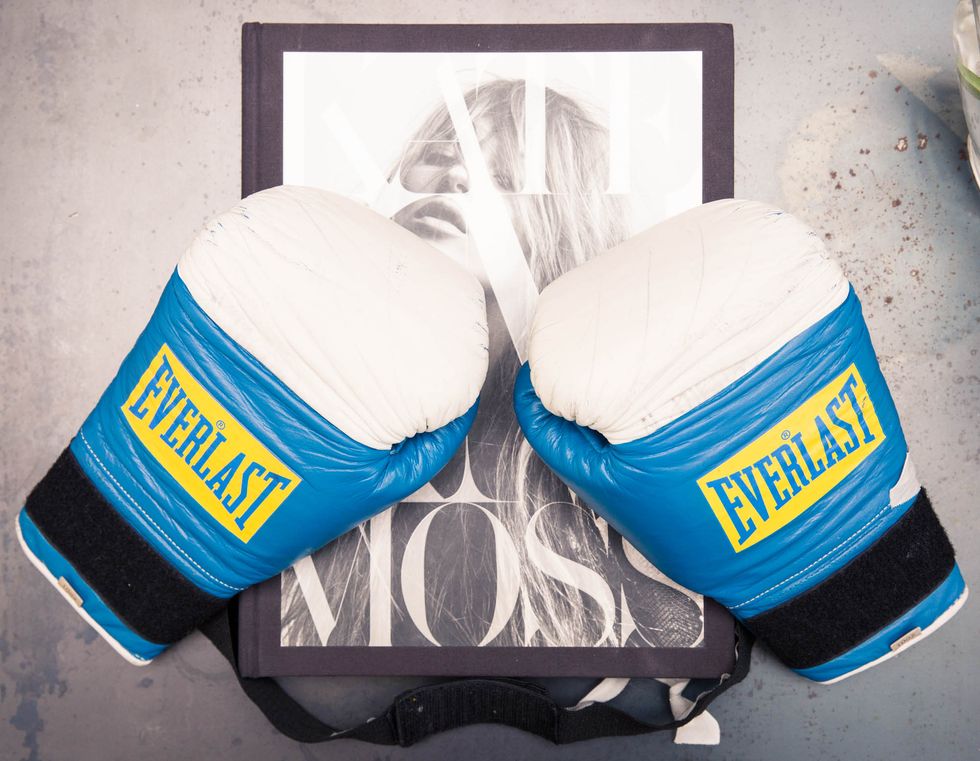
The best advice she can give to designers starting their own labels:
“When people tell you it’s impossible, don’t listen. No matter what you do, if [what you’re doing] really resonates with you, trust it. I’m lucky to have a family that’s really supportive and I think that’s helped me significantly. Believe in yourself—I know that sounds so cliché. I think it’s a matter of going for it and not letting negative feedback deter you. Relationships are huge and very important. I think the most important thing is doing what makes the most sense for your brand. There isn’t a cookie-cutter way of operating, you have to trust what makes the most sense for your brand, messaging and business.”
Oh, and the boxing thing:
“I was a competitive boxer for years. I fought in Madison Square Garden. I was really young and usually female boxers have family members who were into it, but no one in my family was into it. I was 14 and I always loved sports, but I never found anything that I really loved and I hated going to the gym, so I walked into Team USA’s doors, not knowing what that meant. I thought it was just going to be a good workout, and the head trainer took me in and two months into it, he said, you have what it takes to fight. He took me to some live fights and I fell in love with it. I competed until I fought several times at Madison Square Gardens, which was the highlight. I’m a Golden Gloves Champion, which is the best of the amateurs. I was always designing—I would work all day at Calvin Klein and at night I would go to the boxing gym and train for 3-4 hours. I was training six days a week and fighting on the weekends. I won a few titles. I still train—I box 2-4 times a week to Mendez Boxing.”

